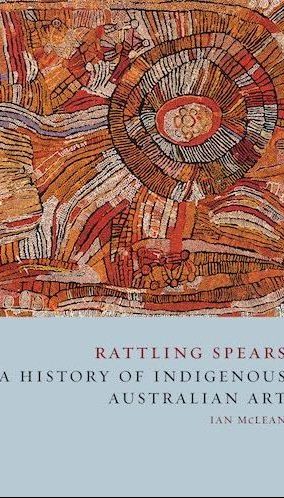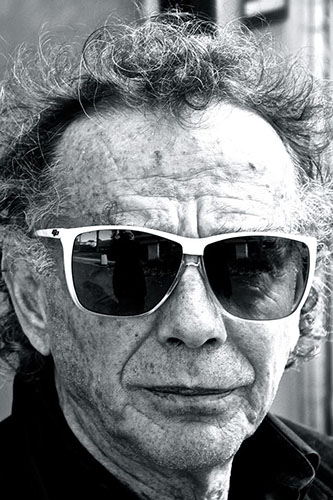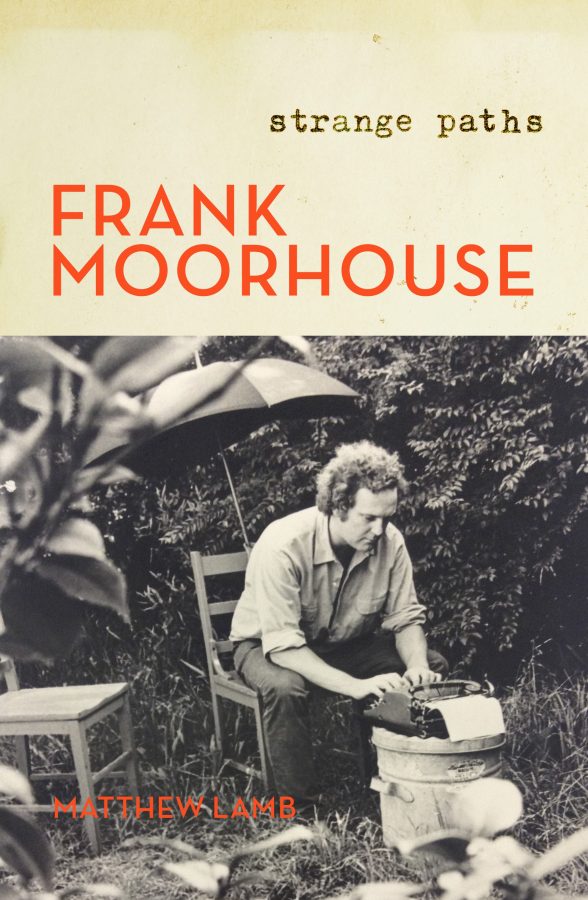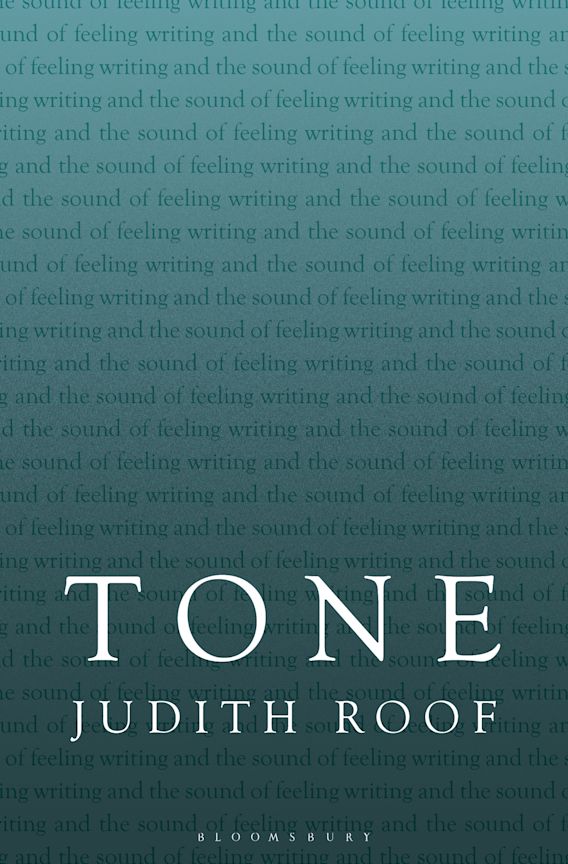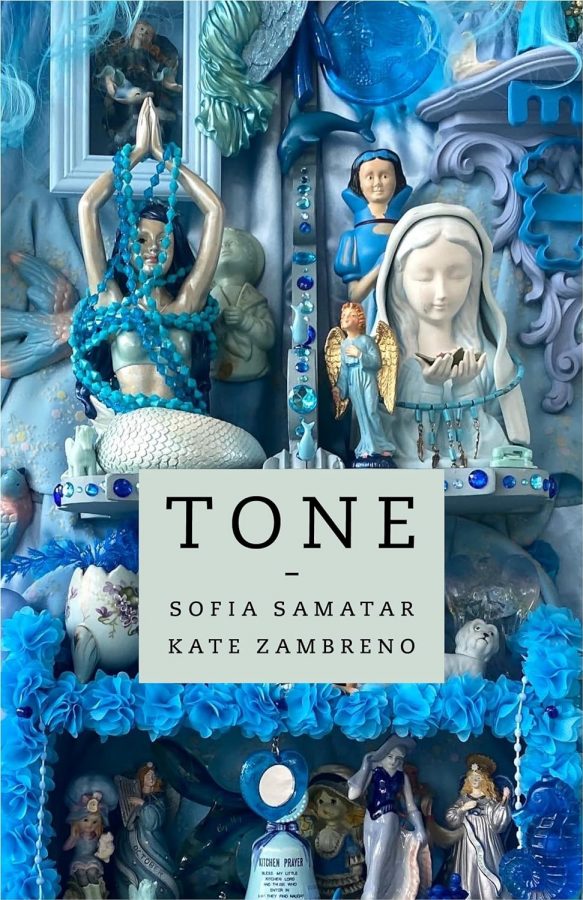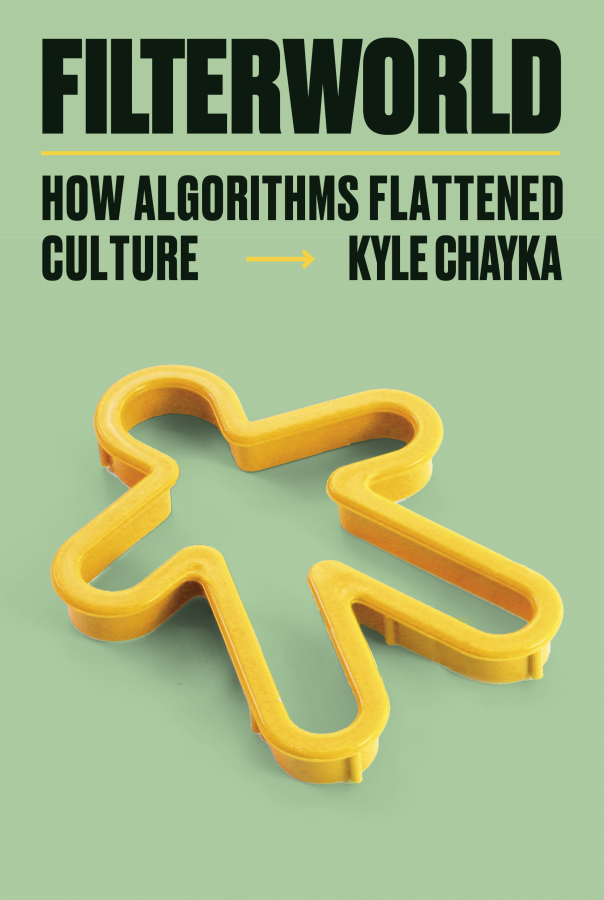The Shimmer of Light: Rattling Spears by Ian W. McLean
In June, 2012, I was at Ngurratjuta Iltja Ntjarra/Many Hands Art Centre in Alice Springs, talking to watercolour artist Selma Coulthard about the trees Rex Battarbee and Albert Namatjira painted in Central Australia. They were real trees, Selma said, growing in real earth. Not ideal or imaginary ones. You could go up to them if you knew where they were. Meet their spirits if you wanted to. While we were talking, I was watching a woman sitting on the floor nearby, at the long end of a large black-painted rectangular canvas. In a calm, meditative, almost abstracted way, she was covering the surface with graceful leaf-feather shapes in two shades of green, light and dark; each a single brush stroke made in a fluent and elegant hand. It was mesmerising.
I had to go away for a bit; when I returned, later in the afternoon, the painting, by Margaret Scobie, from Utopia, was finished: a gorgeous rosette of bush medicine leaves, lustrous green on velvety black. It seemed remarkable, given its intricate structure and detailed composition, that she had painted it beginning in the top right hand corner; while its colours, a dark Kelly green, a lighter, yellowy green, reminded me of a Namatjira painting, The Artist’s Camp near Hermannsburg, I had seen that morning at the Araluen Centre. I had Scobie’s painting in mind as I drifted off to sleep that night; not just the colours. I was seeing the actual moment of inscription, the brush wet with trembling paint as it made a liquid arc of green across the black.
I mention this because one of the core concepts in Ian McLean’s Rattling Spears: A History of Indigenous Australian Art is what he calls performativity. His point is that Indigenous equivalents to works of visual art as we know them in the West have been abstracted, perhaps extracted, from a wider, performative context in which they were a part of ceremony that included body-painting, dance, music, poetry, song, story boards and much else besides. This is the case whether we are contemplating sand painting as practised in Central Desert cultures, the funerary poles erected by Tiwi, the Wandjina images of the Kimberley, which were periodically refreshed, that is repainted, during ceremony, or even the rock art of the Cumberland Basin and its seashores, which was also a focus of ritual practices.
One of the fascinations of this incisive book is the way in which, in its early chapters, McLean traces this process of extraction and abstraction in his account of contact between the representatives of the European Enlightenment, as he characterises the scientists and artists, with their instruments, aboard James Cook’s Endeavour, and the ancient society encountered on the southern shores of what is now called Botany Bay. This meeting, too, was performative; but Cook and his men failed to play their part and so the necessary exchanges of meaning were not made. McLean emphasises Cook’s failure to use the Tahitian, Tupaia, as his intermediary with Gweagal; and points out that, two months later, in North Queensland, when he did let Tupaia act as his guide, a successful meeting between Aborigine and European took place.
Performativity is one of a set of simple, powerful ideas McLean uses to explore his subject. Another is what he calls transculturalism—‘seeing oneself in the other’—which in his usage becomes a methodology in the politics of negotiation. That is, a means by which two moieties—in this case Aboriginal and European—might use ideas, techniques, concepts, media drawn from the other in order to facilitate communication between them. By the very nature of the colonial enterprise, in the first hundred years or so of contact, most of the transcultural effort was made by one side only: the colonists were uninterested in Aboriginal people because they could not see a use for them or even a point to them; while for Aboriginal people their very survival, as a people and a culture, had become inextricably bound up with the need to reach some sort of accommodation with the invaders of their land. Even so, there is evidence that some of the early European painters of the convict era did in fact use techniques—mostly methods of decorative duplication—derived from Indigenous art practice.
Both performativity and transculturalism were fully displayed in what McLean calls the first truly modern performance artwork in Australia: the spearing of Governor Arthur Phillip at Manly Cove in December, 1790. His is a luminous account, fully cognisant of other versions, including that proposed in Inga Clendinnen’s Dancing with Strangers; however, by assimilating it to the contemporary practise of performance art, McLean makes an audacious claim for the modernity of even the earliest Aboriginal performances of transculturalism. He is at the same time admiring of the verve with which Aboriginal people responded to the provocations of the colonial experiment. This characterisation of a robust spirit of engagement might be described as the third of the powerful yet simple ideas McLean uses to animate his discussion.
It is this spirit of engagement which gives him his title. As the epigraph from Willy Kaika Burton, an Anangu man, says:
We have a word for the rattle of spears; that word is Tirkilpa. We have a technique where we roll spears over each other to make this noise. A long time ago this noise would be heard before a battle begins . . . sometimes I hear the Tirkilpa today; it is a different battle today but the fight is real for us.
Art, then, is configured, both explicitly and implicitly, as a means of struggle and a way of simultaneously expanding and protecting the traditional values of Indigenous people. Of preserving, perhaps, what cannot in itself be destroyed: The Dreaming.
McLean is innovative in other ways. A few years ago, writing about the exhibition Australia at the Royal Academy, which opened in London in 2013, he suggested a new historical framework for understanding Australian art. He advocated a three part structure, based around themes of identity and landscape: Empire Art (1788–1918), Australian Art (1918-1970) and post-Australian Art (1970-present), respectively. Following Ian Burn, he proposed that ‘being Australian’ did not become a subject of Australian art until after the first world war, and that until then most developments here can be seen in an international context—as a product of the British Empire. Moreover, the second break point, significantly, took account of two major events: the first, the 1969 wrapping, by Christo Javacheff and Jean-Claude de Guillebon, of the coastline at Little Bay; the second, a year or two later, the beginning of Papunya Tula Artists, which inaugurated the flowering of the desert art movement.
In this book he proposes a similar three part structure for understanding developments in Indigenous art: similar but not identical. Here too he begins with Empire, which takes us from Cook’s visit in 1770 until Federation in 1900. The second stage, called Nation, covers most of the twentieth century, until 1990; but with a significant break, pause, or transition, post-referendum, in 1970. The last stage, which we are presumably still in, he calls Post-Western, and sees its beginnings in the mid-1980s and its term, like that of this book, in 2015. This is a coherent and illuminating scheme, not least because it allows McLean to discuss both the art and the history within the same frame: a rarity in art historical writing, which usually privileges the art and is either confused, uninterested in or ignorant about larger histories.
Within this tripartite structure are seven essays: three on Empire and two each under the other rubrics; culminating in a brief conclusion entitled A Theory of Indigenous Art in the Age of Modernity. This I will discuss later; but before leaving questions of structure and definition aside, it’s worth pointing out how McLean uses a few other terms. By ‘modernity’, for instance, he does not mean ‘modernism’: which might however be contained within the former term. For McLean, after Ernst Gombrich, modern times began when the French Revolution—one year after the First Fleet came in—‘put an end to so many assumptions that had been taken for granted for hundreds if not thousands of years’. As did, precisely, Phillip’s arrival at Sydney Cove. Modernity, then, encompasses multiple and multifarious attempts by which all sorts of people, and peoples, try to come to terms with the dislocations and opportunities rapid societal change causes and offers.
Finally, on the conceptual level, McLean distinguishes between two strategies, which he calls essentialism and cosmopolitanism. One is the claim, made as often by Europeans as it is by Indigenous people, that there is an irreducible core to a peoples’ identity that cannot be avoided, ignored or traded away; this core provides the basis of any art with its integrity and is, moreover, a warrant for the authenticity of that art, whatever its physical shape might be. Opposing this is the cosmopolitan approach, which claims the right to use any form, medium, technique, idea or concept, freely, in the service of expression—whose results are their own warrant of authenticity (or otherwise). Cosmopolitans will not be shackled by identity, just as essentialists may refuse the attractions of the sophisticated and the exotic. These twin strategies, which are not of course as diametrically opposed as I have made them sound, recur throughout the nearly two and half a century period the book covers.
To return to modernity. Early in the first essay, McLean suggests
a distinguishing symptom of modernity is the fragmentation of the Gesamkunstwerk (total work of art) of the performance into specialized fields of not just music, dance and visual art, but also relations of production and consumption—what Roland Barthes described as ‘the pitiless divorce . . . between the producer of the text and its user’. Thus the Western avant-garde seized upon the performativity of the total work of art as a key tactic to counter the alienating effects of modernity. Placing creative agency in the audience and the contemporaneity and sociability of the performance is a radically different concept of art from the pictorial conventions of painting..
One of the most seductive movements in this book is from the (assumed) performativity of pre-contact Indigenous art, through the permutations of the various transcultural strategies used in negotiation with the colonising culture, including the assumption of traditional western notions as to what constitutes a work of art, through to the performativity of contemporary art in both its Indigenous and Post-Western forms. In 1980-81, for example, Marina Abramović and Ulay were in Central Australia where, Abramović said, ‘I got the idea of how the art of the future can exist.’ Bruce Chatwin, accompanied for part of his journey by Salman Rushdie, was there a few years later, looking for songlines. The next decade, in 1998, US minimalist Sol LeWitt saw in Sydney an exhibition of Emily Kame Kngwarreye’s work and asked his patron, John Kaldor, to acquire for him some of her paintings ‘since this is what I am also doing.’ Incidentally, Kngwarreye, who like Margaret Scobie was from Utopia, also preferred, in a performative act, to complete each work at a sitting.
McLean, while tracing the convergence of two radically different traditions, is not naïve enough to think they are actually doing the same thing; nor that they arrive at what seems like the same, or a similar place, by the same route. Indeed, at the core of this study is an attentive inquiry into how such a different tradition—that of Indigenous Australian art—might have produced work, or works, which resemble those from the metropolitan centres of Western culture. And, perhaps more importantly, work which can command in those centres, prestige and prices equivalent to that of their European contemporaries. It is evident, I think, that such an inquiry cannot be pursued without a fine appreciation of Indigenous art itself, and of the societal and historical matrices within which it is made. Mclean possesses this degree of appreciation—par excellence.
Effective transculturalism from the European side of the frontier began towards the end of the nineteenth century, when various agents, usually either missionaries or anthropologists or both, began initiating art production among Aboriginal people. The small carved and painted figures called Toa, made by Dieri people, probably with European help as well as European tools, at Killapaninna Mission near Lake Eyre, are an early and still controversial example; McLean calls them ‘fakes’, which may be too harsh. Meanwhile, in the north, anthropologist Baldwin Spencer pioneered the use of bark panels, derived from ceremony, as supports for individual, portable works of art.
McLean is good on the development of the pepe—paper—economy among the Western Arrernte, which led to the very first Aboriginal artist named and celebrated the way art stars in the West are celebrated: Albert Namatjira. It is matter for regret that issues around the ownership of Namatjira’s copyright continue to restrict those works of his that may be reproduced; but McLean is to be congratulated for his decision to include the rare and wonderful Mt Hermannsburg with Finke River (c. 1940), painted on bean wood. The connection between what Namatjira achieved and what happened at Papunya in 1970-71 is less clearly traced; but McLean’s discussion of the inception of Papunya Tula is nevertheless one of the highlights of the book.
Here too he begins to add interpretative glosses to the captions of the works illustrated, opening up a subject that will resonate throughout the rest of the book: the dialectic between secrecy and revelation which, McLean makes clear, was deliberately, provocatively, instigated by artists working with Geoffrey Bardon at Papunya. The question is not simple: secret-sacred knowledge was revealed in some of the early murals made at Papunya and at Yuendumu, then covered over, often by medium of the famous dots; though cloudy washes of white paint were also used. The same may be true of individual works. The question remains: if it is actually there, even if you can’t see it, does that mean it is or is not revealed? McLean remarks on the ubiquity, in the sacrosanct precincts of cultures of all kinds, of ‘this ambivalence that structures secrecy [so] that it can only make its presence felt in its concealment.’
It is clearly a productive ambiguity rather than a question that has a definitive answer; and later artists have riffed upon it: ‘To see is more dangerous and more powerful than to know, even if one does not know what one is seeing.’ Somewhat later, in 2005, John Mawurndhul, a Bininj bark painter, said, surely sardonically: ‘Tell those Balanda (white people) that it’s okay, there’s no restriction on looking at my paintings. They can enjoy the paintings but buried inside of them are secret meanings they don’t need to know.’ And, we suppose, never will know. Even later, in our own time, some artists have begun to insist that their paintings are ‘without story’. They are as empty of content as a canvas by Barnett Newman, say, Lee Krasner or Mark Rothko.
But how empty is that? I’m reminded of recent discussions of what is called anti-intentionalism, defined by New Zealand art historian Andrew Paul Wood as ‘the involuntary, unconscious message one receives from a work of art [which] may be more important than the conscious one intended.’ Indeed anti-intentionalism can occur even when the artist intended nothing or else did not know what s/he intended. The paradox here is that we may not understand the content of works whose aesthetics we admire: but is this not also true of many other forms of expression? What does dance mean? Architecture? Or, for that matter, literature. The author of Finnegans Wake, James Joyce, denied the book held any meaning apart from its existence as itself. McLean is in no doubt:
What links Western modernism and late twentieth century Indigenous Australian art is not stylistic affinities but the use of abstraction to search for meaning in the cultural upheavals of modernity, as if traditional iconography could not fathom the depths of what they were struggling to translate . . . while not influenced in any obvious or meaningful way by Western modernism, their struggle also opened onto the primal bedrock of visual language . . . before the Babel of iconography and semiotics took hold.
This remark comes during a discussion of the work of Paddy Bedford, in a section of the book entitled Remote Masters. Included amongst these is Rover Thomas and in the re-telling of his life McLean underlines the point about how absolutely Indigenous traditions may differ from Western ones. Rover Thomas, like so many of the remote masters, came to painting late in life. Though born in the Western Desert, he was domiciled from a young age in the Kimberley and worked in the cattle industry there until Aboriginal employment came to an abrupt halt after the 1967 referendum. Employers, instead of treating their workers like virtual slaves, now had to pay award wages; which most of them declined to do. By the mid-1970s Thomas was living at Warnum, a former government ration depot in the East Kimberley; as a man who had lost his connection with his own country, he was, literally, a stranger in a strange land.
But a group of Old Men at Warnum were alert to new possibilities; as McLean puts it, ‘watchful for the flash of the future and the past colliding. None missed the flash of Cyclone Tracy, which destroyed Darwin. Across the Kimberley was heard the cry of the vengeful Wandjina. The ferocity of the cyclone was a sign of hope, a rupture to be seized. The Serpent had struck.’ Subsequently the Old Men at Warnum gave Rover Thomas a corroboree or balgo associated with Cyclone Tracy; a Dreaming, sourced from among the dead, that was his to use. With a local story of his own, he could then become a Kimberley artist. The rest of the tale is well known; but McLean observes that explaining Thomas’s stark and beautiful works, as some have done, in terms of their Rothkoesque appeal, misses the point. ‘They speak to the recent histories of his particular postcolonial world and not the endgames of Western modernism.’
Like Rover Thomas, most of the remote masters (and mistresses) were well on in years when they turned to painting. Nevertheless, in what McLean calls ‘the canvas economy’ (the most saleable form of Indigenous art), the presumed opposition between economics and aesthetics was a contradiction these artists didn’t have to face. Their paintings were dual purposed; they could hand on knowledge, in however coded a form it might appear, at the same time as they sustained their communities with money from sales of their works in the capital cities. This situates painting, usefully, as a strategy for survival as much as a form of expression. Even Namatjira’s representational landscapes, some think, encode ancestral secrets.
At the same time, in those same Australian cities, urban Indigenous art began to flourish. Most of the city artists were young not old; and many of them were angry. Gordon Bennett, for instance, one of the most interesting, complex and prominent of the urban artists, told McLean that ‘he always wanted to be an abstract painter but politics kept getting in the way.’ In other words he felt obliged to try to clear away the detritus of colonialism, racism and so forth before he could explore more formal concerns. Only in the last decade of his life was he able to make something close to the art he had always wanted to, and even then a political sub-text was never entirely absent from his work. Nevertheless, Bennett maintained that what he made were achieved works of art, not examples of polemic or of political theatre.
McLean pairs Bennett with his slightly younger contemporary, Tracey Moffatt but, while he was able to persuade Bennett’s widow to allow her husband’s work to be reproduced as illustrations to the text, Moffatt refused the same invitation. In an extreme form of cosmopolitanism, she wanted, and wants, to be seen, not as an Aboriginal but as a contemporary artist—like any other; even as the content of her work continues to explore Indigenous issues and perspectives. This raises the question of the kinship between young, disaffected, militant urban artists and the remote masters and their inheritors in the bush. One of the great virtues of this book is that McLean demonstrates, without doubt, that such kinship exists; and he does so by means of his meticulous analysis of the cultural and historical milieu in which both kinds of artist must live and work.
What this means, at its deepest level, is found in the ongoing conversation between the Dreaming and the Enlightenment with which Mclean begins his book; and especially how that plays out in historical time—including the ‘future’—and in the art that has been made over the period since 1770. Nothing is simple in this philosophical arena, where rattling spears and tjurunga contend with sextants and theodolites; cans of spray paint with the sepia tones of old colonial photographs. The question is how to make a future. If the Dreaming was always about eternity poured into time, the problem the Enlightenment brought with it—along with its Cartesian accoutrements—was how to protect eternity from time. McLean’s concluding essay is a discussion of just this point.
He quotes Martin Heidegger on the flash: ‘the mirror play of the fourfold of sky and earth, mortals and divinities.’ Indigenous shamans, McLean suggests, also engage in mirror play, and understand world history, or Dreaming, in similar aesthetic terms. He continues: ‘Herein lies the most important function of Indigenous art: it mimics ancestral presence.’ Yolngu call this Heideggerian flash Bir’yun, which anthropologist Donald Thompson (in 1937, after consulting informants) defined as ‘the flash of light that one gets and carries away in one’s mind from a glance at the paintings that are ancestral manifestations.’ Or, as Howard Morphy put it, ‘Bir’yun is the shimmering effect of finely cross-hatched paintings which project a brightness that is seen as emanating from the wangarr (ancestral) being itself.’ McLean adds: ‘Like the rattling of spears, it sends a chill that raises one’s hairs, signalling that the Ancestor is present and the past is now.’
By way of a conclusion, this might seem overtly romantic and also a sidelining of contemporary urban Indigenous art; yet McLean reserves as his last illustration in the book a perhaps surprising work. Called Civilisation, by Tommy McCrae, it is a late nineteenth-century pen and ink drawing showing a group of seven Indigenous shearers dressed in their flash clothes and on their way into town to celebrate by spending their paycheck. ‘These men,’ McLean says, ‘recently torn from their hunting grounds, have in their excessive mimicry of civilization retained their ancestral inheritance.’ And what is that? He paraphrases W E H Stanner: ‘Aborigines never abandon the things of modernity and return to the old life, but nor do they abandon an Indigenous sensibility [which is] at its deepest level orientated towards the aesthetic faculty. Indeed, the metaphysical underpinnings of Indigenous culture that are guaranteed by aesthetic knowledge are held onto more dearly in the heat of radical change.’
The shimmer of light that discloses the presence of the ancestral and the divine is not a unique property of Indigenous Australian culture; it is a value, a belief and a commitment that can be found in many other cultures as well, past and present, all over the world. Amongst Maori, for instance, light trembling upon leaves of a tree in the sun and the wind is thought to herald the approach of the divine; there are many other examples. McLean’s identification of aesthetic knowledge as the basis of Aboriginal culture thus has implications beyond the shores of Australia; it feels almost as if, in saying this about one of the world’s oldest cultures, he is saying it about all cultures. Although in fact he does not take that step.
It’s a tribute to McLean’s perspicuity that his arguments towards this perhaps revolutionary point are never abstract but advanced through a consideration of actual works, artists and events. It’s also the case that he has a very good eye, and that the 149 illustrations in the book, 142 of which are in colour (the black and white works are contemporary photographs) have a coherence, a beauty, a grandeur, indeed a shimmer, which makes Rattling Spears worth owning even if you don’t want to engage with the text. And if you do read the argument, and then reject it, the book still constitutes the best, most comprehensive, accessible and detailed survey of a complex and beguiling field of study that I have yet come across. It is an outstanding achievement.
